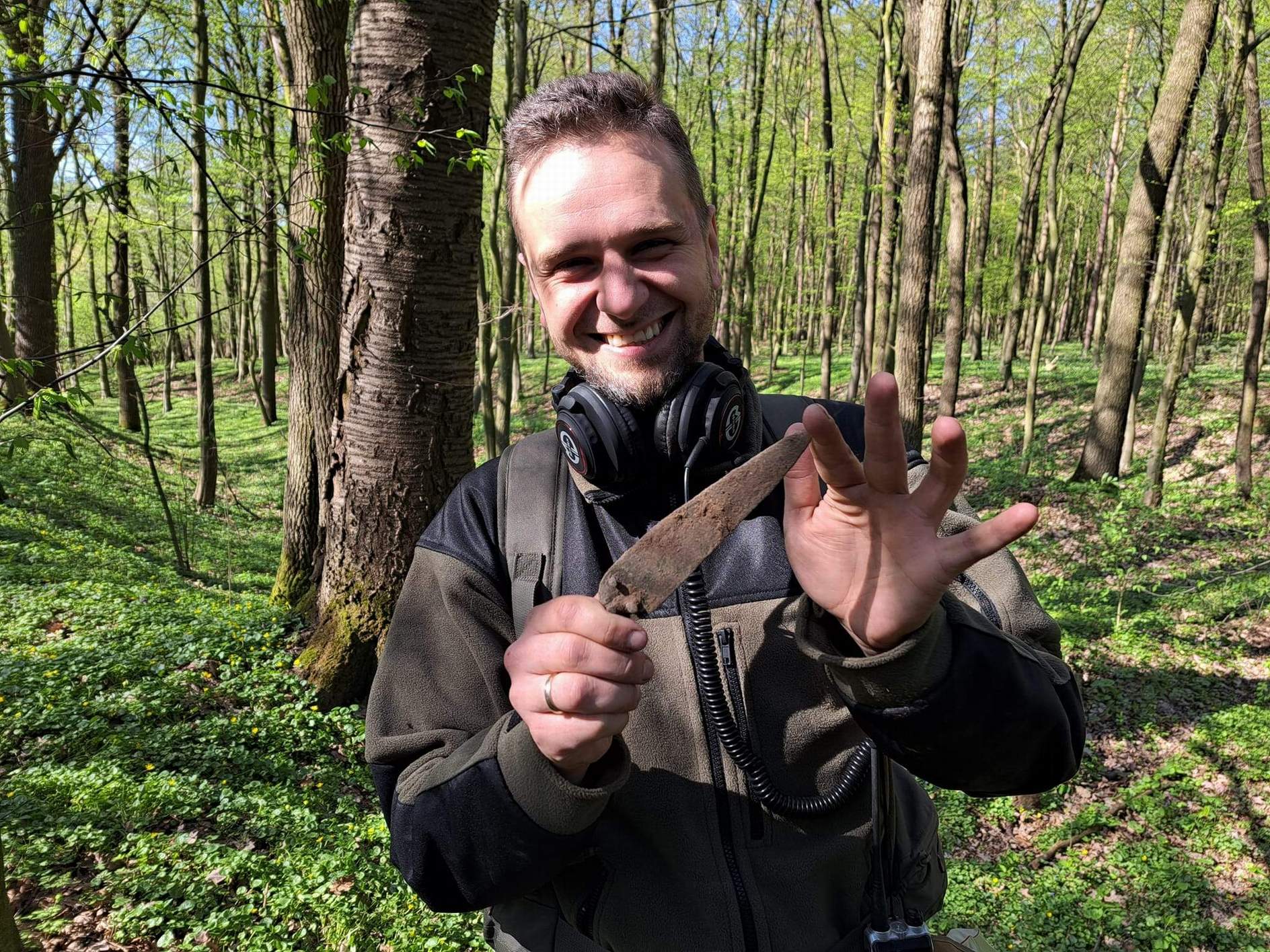Searching for artifacts from the war, they found a 3,500-year-old bronze dagger in great condition
Categories: Nálezy nejenom s detektorem kovů ve východní Evropě
A very rare Bronze Age dagger was discovered in a forest near Krasnystaw in southeastern Poland during a search for objects from World War II. It is practically unworn and in excellent condition. It is the first of its kind in the whole area, possibly originating from Bohemia.
The dagger was discovered by a detectorist Grzegorz Růkas cooperating with the historical association Wolica from Izbica under the auspices of the Lublin Provincial Office. It was lying just a few centimetres below the surface. He and his colleagues took pictures and recorded the coordinates so that they could report the find. But later research revealed no other nearby archaeological material.
About 16 cm long, about 4 cm wide and 0.5 cm thick, the weapon probably dates from around 1 500 BC. The dagger is elongated leaf-shaped with a rib in the middle and preserved rivets that originally connected the bronze dagger to the wooden handle. It is the first of its kind found in this area and one of only twelve found in Poland. It probably arrived in the region together with people from the territory of present-day Czechia, Austria or Slovakia.
A similar dagger was discovered near Olsztyn in northern Poland in 2014, lying in a Smoszew-type grave (a burial site characterised by Bronze Age culture mounds between 1600 and 1300 BC) shallowly under the topsoil. Although the tomb was damaged, many valuable grave goods remained intact. In addition to the dagger, it contained, among other things, a gold hairpin, bronze wire and glass beads. Gold and glass were luxury imported goods in the region. The dagger suggests that this was the grave of a high-ranking man.
Unfortunately, the newly discovered dagger at Krasnystaw was not found in its original context, so it has not yet been established whether it was also originally part of the grave goods. Archaeological research in the area is continuing, and in the meantime the dagger will be examined by the Lublin Provincial Monument Conservator.
Roman Němec
Sources: zwiadowcahistorii.pl, archeologia.com.pl, eksploracjagalicja.pl

detail of riveting

the dagger is in very good condition

the finder a few moments after the discovery

rivets

other side

the other side of the rivets
The article is included in categories: